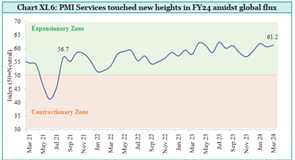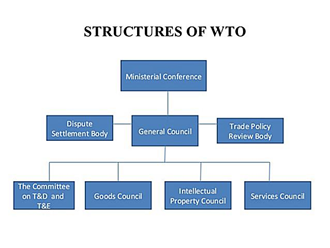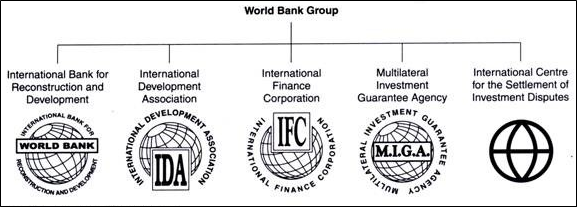1. Insurance Sector
The insurance sector in India comprises life insurance, general insurance, and health insurance, playing a critical role in providing financial security and stability. It is a significant component of the financial services industry, contributing to economic growth and social well-being.
Current Status
-
- Market Size: The insurance market in India is substantial, with total premiums growing at a compound annual growth rate (CAGR) of 14.9%, expected to reach INR 33 trillion by 2031.
- Life Insurance: India is the 9th largest life insurance market globally, with penetration at 3.2% of GDP.
- Non-Life Insurance: This segment, including health insurance, has a penetration of 1.0% of GDP.
- Growth Drivers: The sector’s growth is driven by increasing middle-class incomes, rising awareness, digital penetration, and regulatory reforms such as the increase in FDI limit to 74%.

Issues and Challenges
-
- Low Penetration: Despite growth, insurance penetration remains low compared to global standards due to lack of awareness and financial literacy.
- Regulatory Challenges: Stringent regulations by the Insurance Regulatory and Development Authority of India (IRDAI) can create compliance burdens.
- Fraud and Misrepresentation: Issues like fraudulent claims and falsified documentation undermine trust in the sector.
- Technological Adoption: Slow digital transformation affects efficiency and customer satisfaction.
- Distribution Channels: Predominance of traditional distribution methods hinders broader reach and cost efficiency.
Government Schemes
-
- Pradhan Mantri Jeevan Jyoti Bima Yojana (PMJJBY): Offers life insurance cover at affordable premiums.
- Pradhan Mantri Suraksha Bima Yojana (PMSBY): Provides accidental death and disability coverage.
- Ayushman Bharat: A health insurance scheme aiming to cover over 100 million low-income families.
Important Points
|
2. Tourism
Tourism is a vital part of the Indian economy, contributing significantly to GDP and employment. It encompasses domestic and international tourism across various segments like heritage, medical, and adventure tourism.
Current Status
-
- Post-Pandemic Recovery: The sector is witnessing a resurgence with increased domestic travel and a gradual rise in international tourist arrivals.
- Contribution to GDP: Tourism contributes around 9% to India’s GDP and supports millions of jobs.
- Tourism Growth: India ranked 39th in the 2024 TTDI. Foreign tourist arrivals rose by 43.5% to 92 lakhs in 2023, with foreign exchange earnings increasing by 65.7%.
- Hospitality Sector Expansion: In 2023, India added 14,000 hotel rooms, reaching 183,000 rooms. The average daily rate rose by 13.6% to ₹7,616 in FY24.
Issues and Challenges
-
- Infrastructure: Inadequate infrastructure and connectivity remain major challenges.
- Safety and Security: Concerns over safety and security impact international tourism.
- Marketing and Promotion: Need for improved marketing strategies to promote diverse tourism offerings.
- Sustainability: Managing environmental impact and promoting sustainable tourism practices.
Government Schemes
-
- Swadesh Darshan Scheme: Develops theme-based tourist circuits to promote diverse tourism experiences. Swadesh Darshan 2.0 targets 55 destinations, and India chaired the SCO Tourism Expert Working Group.
- PRASHAD Scheme: Focuses on the development of pilgrimage and heritage destinations. Under PRASHAD, 29 new tourism sites are being developed.
- Incredible India 2.0: Enhances the promotion of India as a premier global tourism destination through digital and traditional marketing channels.
3. Real Estate
The real estate sector includes residential, commercial, and industrial properties. It is a key driver of economic growth and employment in India, with significant contributions to GDP.
Current Status
-
- Market Size: Market size of Indian real estate market is estimated at USD 0.33 trillion in 2024, and is expected to reach USD 1.04 trillion by 2029, growing at a CAGR of 25.60% during the forecast period (2024-2029).
- Affordable Housing: Focus on affordable housing under schemes like Pradhan Mantri Awas Yojana (PMAY) continues to drive growth.
- Commercial Real Estate: Witnessing growth with the expansion of IT and service industries.
- Sector Contribution and Recovery: Real estate and ownership of dwellings accounted for over 7% of total GVA in the past decade. Post-pandemic, the sector recovered robustly, with a shift towards larger, sustainable homes and peripheral areas driven by remote work trends.
- Residential Sales Growth: In 2023, residential real estate sales hit their highest since 2013, with a 33% YoY growth to 4.1 lakh units. New supply also reached an all-time high with 5.2 lakh units launched.
- Housing Loans and Financing: Housing loans as a percentage of GDP increased from FY12 to FY24. Housing Finance Companies (HFCs) significantly contributed to housing credit, with HFCs’ outstanding housing loans constituting 70.8% of their total loans as of March 2024.
- Rera Implementation: RERA now mandates an ‘Agreement to Sale’ at the time of registration and requires two-thirds consent from allottees/homebuyers for any layout changes which has increased accountability. It has also ensured that transactions are fair.
Issues and Challenges
-
- Approvals: Complex approval processes and regulatory delays hinder growth.
- Financing: High cost of finance and difficulty in accessing affordable credit.
- Urban Planning: Inadequate urban planning and infrastructure development.
- Transparency and Accountability: Issues related to transparency and consumer protection remain significant concerns.
- Affordable Housing: Off late, there is a push towards more luxury segment, ignoring the demands in the affordable housing market.
- Stalled Projects: Due to financial frauds, over leveraging and lack of viability of many projects, the sector saw many projects getting stalled which jeopardised hard-earned money of middle classes.
Government Schemes
-
- Pradhan Mantri Awas Yojana (PMAY): Aims to provide affordable housing for all
- Real Estate (Regulation and Development) Act (RERA): Ensures transparency, accountability, and consumer protection in real estate transactions.
- Smart Cities Mission: Aims to develop sustainable and inclusive urban spaces with modern infrastructure and amenities.
- SWAMIH Investment Fund: It is India’s largest social impact fund specifically formed for completing stressed and stalled residential projects. The Fund is sponsored by the Ministry of Finance, Government of India, and is managed by SBICAP Ventures Ltd., a State Bank Group company.
Key measures and outcomes from RERA’s implementation
|
4. Information Technology Services, Tech start-ups and Global Capability Centres
-
-
Information Technology (IT) services
-
-
-
- Sector Growth: Information and computer-related services’ share of GVA rose from 3.2% in FY13 to 5.9% in FY23, with a 10.4% growth rate in FY21.
- Pandemic Impact: The COVID-19 pandemic accelerated technology adoption, boosting IT services and supporting the growth of Global Capability Centres and the tech start-up ecosystem in India.
-
-
-
Global Capability Centres
- GCC Growth: India’s Global Capability Centres (GCCs) expanded from 1,000 in FY15 to 1,580 centres with 2,740 units by FY23, employing 16.6 lakh people.
- Revenue and Sector Focus: GCC revenue grew from USD 19.4 billion in FY15 to USD 46 billion in FY23, with 58% of talent in software and BFSI.
-
|
What are Global Capability Centres (GCCs)?
|
-
-
Technology start-ups in India
-
-
-
- Start-Up Surge: India’s tech start-ups surged from 2,000 in 2014 to 31,000 in 2023, driven by COVID-19 and rising demand in sectors like EdTech and BFSI.
- Sector Growth: Top 2023 sectors included EdTech (16%), EnterpriseTech (12%), BFSI (10%), and HealthTech, with 1,000 new tech start-ups emerging.
- Global Ranking and Support: India ranks third globally in tech start-ups, excelling in AI talent and innovation, supported by initiatives like Start-up India and the National Deep Tech Policy.
-
-
-
Telecommunications
-
-
-
- Telecommunication Growth: Teledensity rose to 85.7% by March 2024, with wireless connections at 116.5 crore and internet subscribers surging to 95.4 crore, driven by the Digital India campaign.
- 5G Advancements: India, now a leader in 5G, improved its mobile broadband speed ranking from 118 to 15, with a 5G Test Bed and Bharat 5G Portal enhancing innovation.
- 6G and Broadband Initiatives: The Bharat 6G Vision aims to advance 6G technologies. The Amended BharatNet Program connects all Gram Panchayats with 6,83,175 km of Optical Fibre Cable.
-
-
- E-Commerce: The Indian e-commerce sector is projected to surpass USD 350 billion by 2030, driven by technological advancements, evolving business models, and supportive government initiatives. The share of modern retail, including e-commerce, is expected to rise to 30-35% of the total retail market within the next 3 to 5 years.



